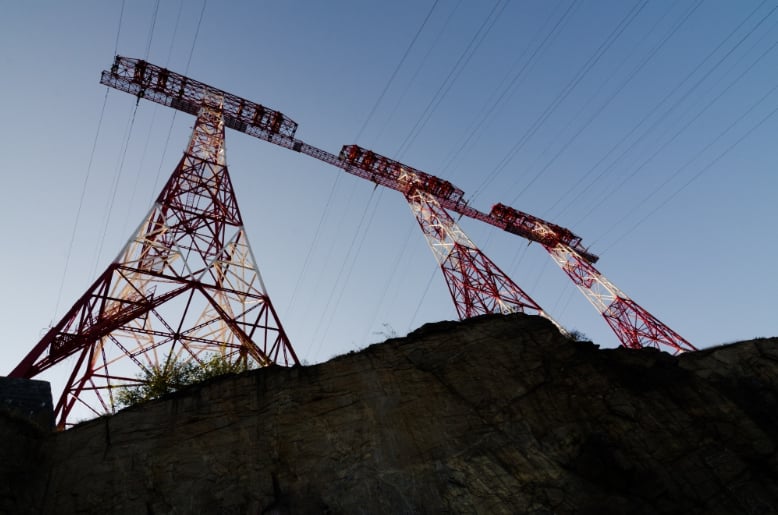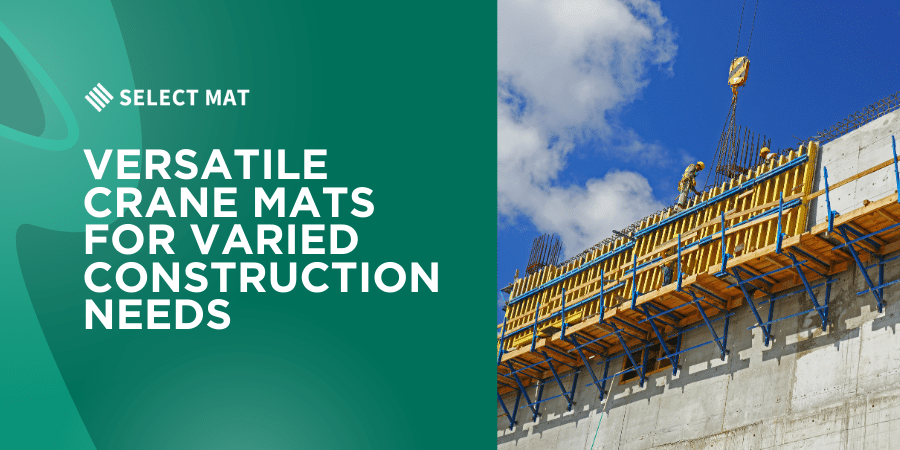Understanding the Value Proposition of T&D Matting Rentals
Transmission and distribution (T&D) projects demand solutions that not only meet technical requirements but also deliver meaningful return on investment. For project managers, site supervisors, and equipment procurement specialists working on power line construction, substation development, and grid expansion initiatives, strategic matting decisions can significantly impact both project timelines and bottom-line results.
T&D matting solutions—ranging from composite mats to timber crane mats and specialized access roads—represent more than just ground protection. When approached strategically through rental agreements rather than outright purchases, these solutions become powerful assets that minimize capital expenditure while maximizing operational efficiency.
According to industry data, well-implemented matting rental strategies can reduce project access costs by 15-30% compared to traditional approaches, while simultaneously decreasing environmental remediation expenses and minimizing compliance risks. Let’s explore how the right matting rental decisions can transform your T&D project economics.
The Financial Case for Renting vs. Buying T&D Matting
The capital-intensive nature of transmission and distribution projects makes rental solutions particularly attractive. Consider the following benefits exclusive to the rental model:
- Eliminated Storage Costs: Between projects, purchased mats require secure storage facilities, transportation, and ongoing maintenance—expenses entirely avoided through rental agreements.
- Improved Cash Flow Management: By converting what would be a major capital expenditure into a predictable operational expense, project managers gain budgetary flexibility and improved financial forecasting capability.
- Scalability Without Risk: T&D projects frequently fluctuate in scope and requirements. Rental agreements allow for seamless scaling up or down without the financial risk of owning underutilized assets.
- Access to Latest Technologies: Matting innovations continue to advance. Rental customers benefit from access to the newest composite materials, engineered designs, and specialized solutions without the commitment of ownership.
- Reduced Maintenance Responsibility: Matting rental partners handle inspection, repair, and replacement of damaged units—transferring maintenance responsibility and associated costs away from your project team.
For construction contractors working on time-sensitive T&D corridors, these advantages translate directly to competitive bidding positions and healthier project margins.
Selecting the Right Matting Solution for Maximum Project Efficiency
The transmission and distribution sector presents unique challenges that require tailored matting approaches. When evaluating rental options, consider these performance-critical factors:
Weight Capacity and Engineering Specifications
T&D projects frequently involve heavy specialized equipment, from transmission pole installation rigs to substation transformer transports. Strategic matting selection must account for:
- Maximum load requirements for the heaviest equipment
- Ground pressure distribution capabilities
- Stability on varying terrains
- Engineering certification documentation for compliance purposes
Premium matting rental providers offer detailed load-bearing specifications and engineering support to ensure optimal matching between equipment requirements and mat selection.
Environmental Considerations and Regulatory Compliance
Environmental compliance officers know that T&D corridors often cross sensitive ecosystems, wetlands, and protected habitats. Modern matting solutions address these challenges through:
- Minimized ground disturbance technologies
- Reduced environmental remediation needs
- Wetland-specific matting designs
- Compliance with regional environmental regulations
By partnering with knowledgeable matting providers, projects can navigate complex regulatory requirements while maintaining access to critical work areas.
Logistical Efficiency and Installation Timelines
In time-sensitive T&D projects, the speed and efficiency of matting deployment directly impacts project schedules. Consider these logistical advantages of strategic rental partnerships:
- Coordinated delivery scheduling aligned with project phases
- Experienced installation teams
- Purpose-designed handling equipment
- Flexible deployment and removal timelines
- Emergency response capabilities for weather events
These operational efficiencies translate to fewer work stoppages and more predictable project timelines.
Real-World Applications: Matting Solutions Across the T&D Spectrum
Transmission Line Corridor Access
Transmission corridor projects present unique challenges, often traversing remote locations with limited existing infrastructure. Strategic matting solutions for these applications include:
- Temporary access roads capable of supporting heavy transmission structures
- Bridge mats for crossing small waterways without permanent structures
- Swamp mats for traversing wetland areas while maintaining environmental compliance
- Hillside stabilization systems for working on challenging topography
By utilizing specialized rental matting for these applications, construction teams maintain project momentum regardless of terrain challenges while avoiding the capital costs of purchasing such specialized equipment.
Substation Construction and Expansion
Substation environments demand precision access and exceptional stability. Purpose-designed matting solutions for these critical infrastructure projects include:
- Engineered crane mats for transformer placement and heavy equipment operation
- Composite mats for electrical safety in energized environments
- Anti-slip surfaces for worker safety during adverse weather conditions
- Specialized configurations for tight quarters work around existing infrastructure
These applications demonstrate how targeted matting rental strategies deliver both operational benefits and cost advantages compared to the limited flexibility of purchased solutions.
Emergency Response and Storm Restoration
When transmission infrastructure requires emergency restoration after severe weather events, time is critical. Specialized emergency response matting features:
- Rapid deployment capabilities
- Helicopter-transportable configurations for remote access
- All-weather traction enhancement
- Modular designs for challenging terrain
The unpredictable nature of emergency restoration work makes rental solutions particularly advantageous, providing immediate access to specialized equipment without long-term ownership commitment.
Maximizing ROI Through Strategic Rental Partnerships
Beyond the matting products themselves, the expertise and capabilities of your rental partner significantly impact project ROI. When evaluating potential matting providers, assess these value-added services:
Project Assessment and Engineering Support
Leading matting rental providers offer comprehensive site evaluation services, including:
- Pre-project terrain assessment
- Access route planning
- Custom matting configuration designs
- When needed:
- Engineering documentation for permitting requirements
- Weight capacity verification
These consulting services ensure optimal matting selection and deployment strategies tailored to your specific project requirements.
Logistics Coordination and Equipment Integration
Experienced matting partners synchronize delivery, installation, and removal operations with overall project schedules, providing:
- Phase-based deployment planning
- Multiple-site coordination
- Integration with other rental equipment
- Transportation optimization
- Weather contingency planning
This coordination minimizes project delays and reduces standby costs for other equipment and personnel.
Safety and Environmental Compliance Documentation
For safety and environmental compliance officers, comprehensive documentation is essential. Premium matting rental partners provide:
- OSHA compliance documentation
- Environmental protection planning
- Hazard assessment assistance
- Best practices training
- Regulatory submission support
These services reduce administrative burden while ensuring projects maintain compliance with increasingly complex regulations.
Measuring and Optimizing Matting ROI
Quantifying the return on investment from strategic matting decisions requires consideration of both direct and indirect factors. Construction project managers should evaluate:
Direct Cost Factors
- Rental rates compared to purchase amortization
- Transportation and installation expenses
- Project duration and utilization efficiency
- Removal and restoration costs
- Maintenance and replacement expenses
Indirect Value Factors
- Schedule acceleration benefits
- Environmental compliance risk reduction
- Safety incident avoidance
- Workforce productivity improvements
- Project site access reliability
By comprehensively analyzing these factors, project teams can document and optimize the full financial impact of their matting strategies.
Conclusion: Strategic Matting as a Competitive Advantage
In the increasingly competitive T&D construction sector, strategic matting rental decisions represent more than just ground protection—they provide a meaningful competitive advantage. By leveraging specialized solutions without the capital burden of ownership, contractors gain financial flexibility, access to innovative technologies, and expert support that translates directly to improved project outcomes.
As transmission and distribution infrastructure continues its critical expansion and modernization, those contractors who implement the most effective matting rental strategies will enjoy advantages in bidding competitiveness, project efficiency, and ultimately, client satisfaction.
When evaluating your next T&D project, consider the comprehensive ROI implications of your matting strategy. The right rental partnership may well be the difference between project success and merely acceptable performance.
FAQ: Maximizing ROI with Strategic T&D Matting Rentals
- Why rent T&D matting instead of buying?
• Converts large capital outlay into a predictable operational expense
• Eliminates storage, handling, and long-term maintenance costs
• Provides scalability—add or return mats as project scope changes
• Grants access to the latest composite, timber, and engineered mat designs - How much can I save by renting versus purchasing?
Industry benchmarks show rental strategies can reduce overall access costs by 15–30%, thanks to avoided storage fees, bundled installation/maintenance services, and better utilization of specialized mats only when needed. - How do I select the right matting solution for my T&D project?
Evaluate:
• Equipment loads (pole-setting rigs, transformers, cranes) and required ground-pressure distribution
• Terrain conditions (soft soils, sands, wetlands, slopes) and environmental sensitivity
• Project duration, phase-in/phase-out timing, and weather cycles
• Compliance requirements (engineered certification, wetland-approved products)
Work with your rental partner to match these criteria against their load-rated mat portfolio. - What environmental benefits do modern T&D matting solutions offer?
• Minimized ground disturbance and compaction—critical in wetlands and protected habitats
• No chemical treatments (with composite mats) and recyclability at end-of-life
• Quick decontamination between sites to prevent cross-contamination of seeds, spores, fungi, soil or foreign organisms to the next project.
• Documentation support for regulatory submissions and compliance audits - How do rental partnerships streamline logistics and installation timelines?
• Coordinated delivery aligned with project milestones
• Skilled installation crews and purpose-built handling equipment
• Flexible deployment and removal windows, including emergency call-outs
• Integrated planning for multi-site or phased rollouts - Which matting solutions are best for transmission-corridor access?
• Temporary access roads to support pole-setting and conductor stringing rigs
• Bridge mats for stream/water-course crossings without permanent structures
• Swamp mats for wetland traversal with minimal environmental impact
• Hillside stabilization systems for steep or uneven terrain - What matting options suit substation construction and expansion?
• Heavy-load crane mats for transformer siting and equipment staging
• Electrically safe composite mats for energized environments
• Anti-slip textured mats for worker safety in all weather conditions
• Custom configurations for tight or congested work areas - How can rental matting support emergency response and storm restoration?
• Rapid-deployment mats stored strategically for quick dispatch
• Helicopter-liftable or modular mats for remote or inaccessible sites
• All-weather traction surfaces to maintain uptime
• Short-term rental terms eliminate long-term storage or ownership burdens - What value-added services should I look for in a matting rental partner?
• Pre-project site assessments and custom engineering designs
• Load-rating documentation and certification support for permitting
• Phase-based logistics coordination, including weather-contingency plans
• OSHA/safety compliance packages and environmental-protection training - How do I measure and optimize matting ROI?
Calculate direct and indirect factors:
• Direct costs: rental rates, transport & installation, maintenance, removal, and restoration
• Indirect benefits: schedule acceleration, reduced environmental penalties, safety incident avoidance, and improved equipment uptime
Tracking these metrics against baseline “purchase and store” scenarios demonstrates true ROI. - Can rental agreements be tailored to long-term T&D projects?
Yes. Many providers offer flexible leasing terms (often beyond three months), structured payment schedules aligned with project cash flow, and guaranteed mat availability throughout project phases. - What’s the first step to implementing a strategic T&D matting rental program?
Contact your matting provider for a no-obligation site evaluation. They will deliver a customized proposal covering product recommendations, logistics planning, cost modeling, and ROI analysis—equipping you to bid more competitively and execute more efficiently.



